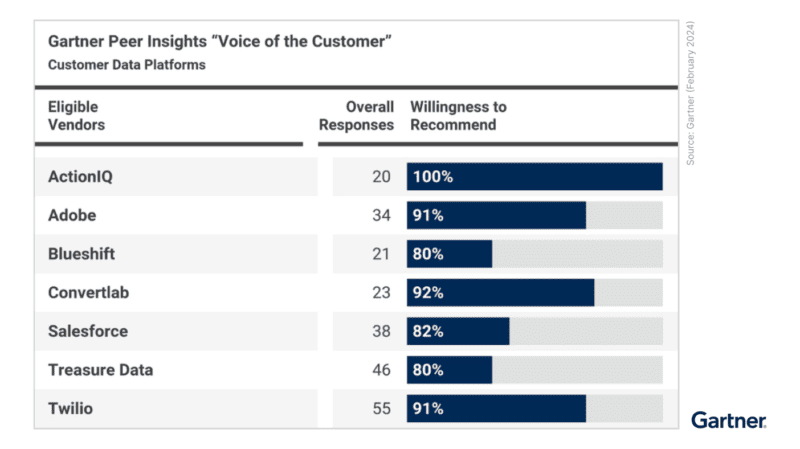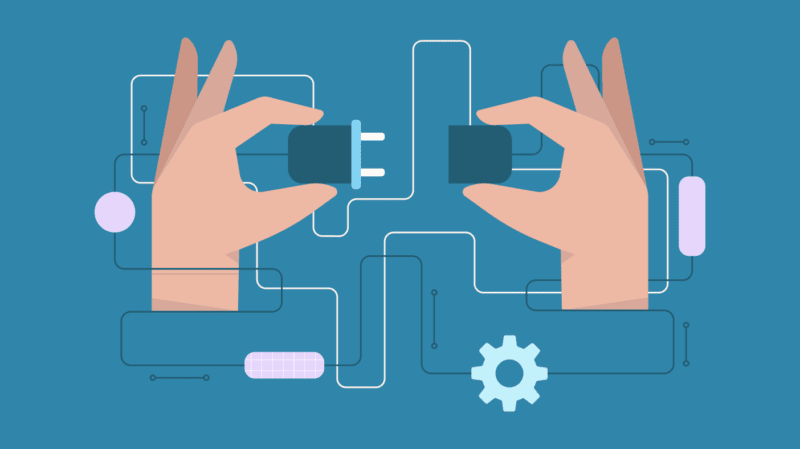Which Customer Data Platform Capabilities are a Must for Your CDP?

To meet the modern consumer’s high expectations for an excellent customer experience, many brands have come to realize they need to improve their ability to:
- Deeply understand their customers
- Identify customer wants and needs
- Activate personalized experiences that drive sustained customer loyalty
At the heart of achieving this goal lies one of the most important assets a brand possesses: the first-party customer data that tells the rich story of each individual customer’s engagement with the brand. But accessing and utilizing that data to create great customer experiences is a big challenge for many organizations.
The Challenge of Fragmented Customer Data
Data is fragmented across multiple systems, with partial, disconnected information about each customer spread amongst them. At best, with help from IT and other technical specialists, marketers and other business users can only gain a partial view of customer behavior. Perhaps their browsing or buying behavior within a single channel, or their responsiveness to marketing campaigns via a single touchpoint.
Navigating Siloed Channels
And when it comes to using those limited insights to create a more tailored customer experience, the data can often only be leveraged within a single channel. Creating a disconnected and inconsistent view of the brand for the customer, and a disappointing overall personalized experience.
CDPs to the Rescue
Customer data platforms (CDPs) are designed to help brands overcome these challenges and deliver on consumers’ expectations for a superior customer experience. As a solution that’s in-demand, many different vendors have thrown their hat in the ring as a CDP offering. Additionally, many organizations not only consider the vendor options for a CDP, but also consider building a CDP either in house, or with the help of outside marketing system integrators.
(If you’re considering building your CDP, be sure to check out these updated build vs. buy considerations. Still new to CDPs? Learn more here: “What is a CDP?”).
Understanding Core Customer Data Platform Capabilities
With the number of solution offerings in the martech space, as well as the potential complexity of a build project, figuring out how to approach your CDP project can be dizzying. To align your solution to your organization’s larger goals, read about customer data platform architecture and how to avoid the top mistakes when buying a CDP. While you’re identifying use cases for a CDP, it’s also helpful to understand the core capabilities that should be part of any robust CDP solution. That’s the focus of this post.
The Four Key Components of a Complete CDP
The core capabilities and foundational components of a CDP can be broken into four key areas:
- Unify. Bringing together and matching granular customer behavior across online and offline channels, creating a single customer view or customer 360
- Analyze. Making customer insights rapidly and readily available to everyone who needs them—especially business users—and augmenting human intelligence with AI
- Activate. Giving the ability to orchestrate, test and measure experiences across all customer touchpoints
- Infrastructure. Providing a highly performant, secure and scalable backend that integrates with your existing tech stack and any future best of breed additions
The first three categories of capability—unify, analyze and activate—take your raw data and turn it into insights you can use to benefit both your customer and your business. Underneath it all, your infrastructure is the foundation to enable that work and activate across all your data sources, multiple channels and touchpoints.
Unifying Your Data
The unification layer is your CDP’s engine, and is the most critical element in determining the effectiveness of all downstream capabilities and product features. When your unified customer data is fully accessible, your marketing team goes from idea to action up to 80% faster—giving you speed to market measured in hours rather than weeks and months.
A CDP with strong data unification capabilities will excel in the areas of:
- Collection. Ingesting and unifying all your customer data in real time, from both online and offline sources, and then storing it persistently in your preferred marketing cloud environment
- Matching. Creating a single view of each individual customer by deduping and resolving your customer records using a range of configurable techniques including machine learning (ML)
Analyzing Customer Behaviors
Your agile responsiveness to customer wants and needs—using data-driven intelligence—directly impacts your ability to deliver standout customer experiences. A CDP must provide business users with an intuitive interface to access insights, and to iterate experiences on-the-fly—all without ever having to call the vendor or IT. An analytics layer combined with a strong data foundation is proven to increase the impact of your personalization efforts by 2X.
A CDP with strong customer data analysis capabilities will excel in the areas of:
- Usability. Empowering business users with self-service insights, audiences, and activation capabilities, all within the bounds of defined permissions and governance controls
- Intelligence. Running advanced analytics and operationalizing ML-based models across the entire history of customer behaviors
Activating Personalized Experiences
You can only realize the value of data and analytics if they are activated into personalized customer experiences. Your CDP must activate the delivery and measurement of personalized experiences—synchronized across every channel customers interact with your brand. The activation layer uses data and analytics so you can orchestrate and improve experiences through iterative experiments and ML-powered optimization. All leading to a 20% lift in business outcomes.
A CDP with strong customer data analysis capabilities will excel in the areas of:
- Orchestration. Defining, coordinating and prioritizing the customer journey across all offline and online channels, in real-time, with a single UI designed for business users
- Optimization. Running multidimensional tests, applying machine learning to experiences, and measuring business impact
Built as Enterprise Grade Infrastructure
Brands seeking to transform the customer experience have high standards for governance, privacy, security, system reliability, interoperability and performance. The CDP must meet these standards while also integrating seamlessly with existing organizational structures and your marketing ecosystem. Be sure to run through these requirements with CDP providers to validate they meet the needs of your enterprise.
A CDP with strong enterprise grade infrastructure will excel in the areas of:
- Scalability. Processing petabytes of incoming data in support of millions to hundreds of millions of customers, with the horsepower to compute all of that data during ingestion, segmentation, predictive analytics, and activation exercises
- Flexibility. Ingesting data in any format from a wide variety of enterprise data sources, and giving marketers the ability to configure data within the UI, eliminating dependency on technical resources
- Connectivity. Connecting with any system across sales, service, and marketing, furthering your best-of-breed, hub and spoke strategy with best-in-class technologies at each corner of your tech stack
- Privacy. Compliance with current and emerging standards including GDPR, CCPA, HIPAA and subject to SOC Type II certification
Bringing it All Together
If your CDP is rich in capability and well-architected across all four categories of unify, analyze, activate and infrastructure, you’re likely to have a solution that’s well-positioned to handle both the current and future demands you’ll make of your CDP.
For a deeper dive on setting up a robust CDP evaluation, be sure to download our CDP Market Guide, updated yearly. We also invite you to contact our experts.





